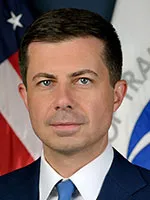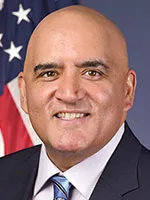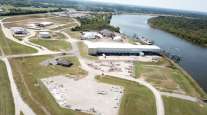Staff Reporter
DOT Safety Plan Promotes Wireless Communications on Roadways

[Stay on top of transportation news: Get TTNews in your inbox.]
WASHINGTON — The U.S. Department of Transportation released a national plan to promote the advancement of a developing technology enabling vehicles and road infrastructure to communicate with each other to improve safety, while acknowledging challenges.
Contrasting roadway safety benefits with grief from families who lost loved ones in traffic accidents, several top federal transportation officials joined Aug. 16 at DOT headquarters to unveil a road map for the nascent technology called “Saving Lives with Connectivity: A Plan to Accelerate V2X Deployment.”
Transportation Secretary Pete Buttigieg, in an earlier-released prepared statement, said a milestone was reached by issuing the national plan to save lives, transform travel and “move us closer to nationwide adoption of this technology.”
“The plan represents a call to action in providing a framework for all of us to continue to work together toward the same goal of accelerating V2X deployment to save lives on our nation’s roadways,” Federal Highway Administrator Shailen Bhatt said.

Buttigieg
While promoting the use of V2X communication, Bhatt disputed public depictions of the technology as being experimental.
“This is not about pilot programs; this is not about trying to test out technology; this is proven technology that works. We know it works. We know it works in the field,” he said. “We know that there are deployments out there right now today across the nation that are utilizing this technology. And thanks to the bipartisan infrastructure law, there is funding available to make this a reality.”
From coast to coast, a $1 trillion bipartisan #infrastructure package is breathing life into long-awaited #transportation projects.
Read more: https://t.co/LteKHizeI9 pic.twitter.com/1Gq15dQ82X — Transport Topics (@TransportTopics) August 7, 2024
In June, the Federal Highway Administration granted $60 million for V2X (vehicle-to-everything) to promote adoption of connected and interoperable vehicle technologies in model programs in Arizona, Texas and Utah.
For example, the Maricopa County transportation department in Arizona is getting $19.6 million to use 5.9 GHz communications to connect 750 physical and virtual roadside units to 400 vehicle onboard units in transit, emergency and freight fleets.

Bhatt
Utah was allocated $20 million to deploy V2X communications, and in Colorado and Wyoming to deploy the technology in areas such as Interstate 80, I-70 from Denver to the Utah border and I-25 through Colorado. One function of the project will be to demonstrate the technology with connected intersections, different weather, warnings about curve speeds and combined with other safety alert technologies.
The plan recognizes several important challenges in widespread deployment, including the technology’s need to use wireless communications, given the “wireless spectrum is limited and in great demand.” Other roadblocks include:
- A possible inability to have total wireless interoperability due to supplier differences.
- Public agencies’ lack of funding, including paying to install, operate, maintain and staff V2X applications.
- Having to rely on equipment manufacturers to invest and install onboard units in new vehicles and create standards to ensure communications with roadside units.
Saving Lives with Connectivity: A Plan to Accelerate V2X De…
The federal V2X plan seeks National Highway System deployment on 20% of the NHS from 2024 to 2028, on 50% of the system from 2029 to 2031 and full deployment no later than 2036.
Want more news? Listen to today's daily briefing below or go here for more info:




